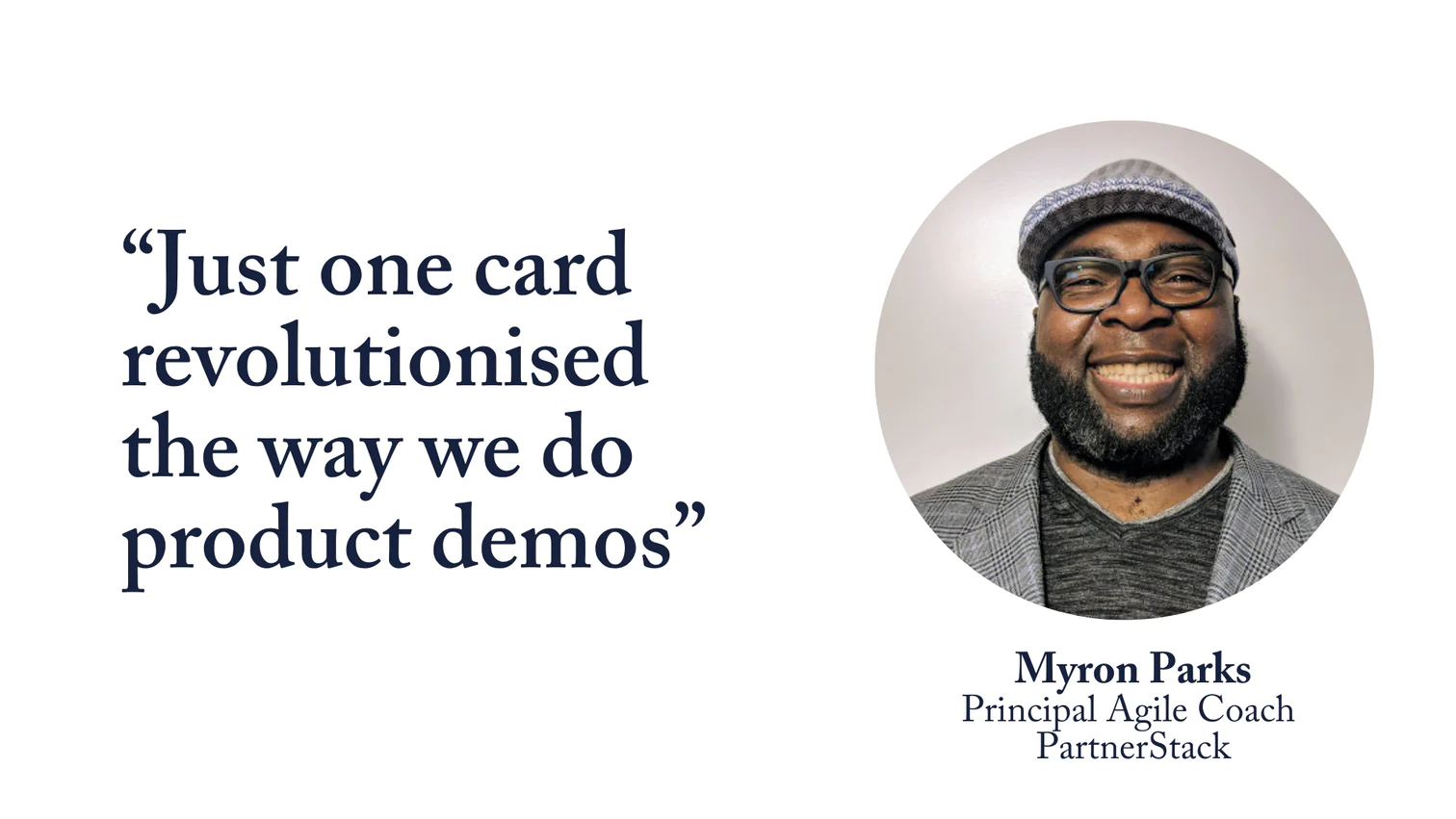Myron Parks is the principal agile coach at PartnerStack, a software company in Toronto. He gets a request:
“Hey Myron, can you do a seminar on how to demo a product for our hackathon?”
In true hackathon spirit, Myron gave himself two hours to prepare.
“I wanted our Product Managers to have one novel way to demo their product,” says Myron. “I wanted to focus on the moment where the value is realised.”
Myron knew he needed a story to give him that novelty and focus. So he picked up Storyteller Tactics.
“I went to the Story Building System. I went down the list. Do I know where to find my story, yes. Do I know how to tell my story, ah… no.”

So Myron went to the Style section and picked the Movie Time tactic.
“The front and back of the card give you a really good primer for what you’re trying to do,” he explains. “It helped me set up the technique for the audience.”
For my money, Movie Time is one of the most immediately useful cards for the business storytelling beginner. Give us a story like this:
- Action: show us real people, doing something in a real time and place.
- Emotion: then tell us how they feel and what’s at stake.
- Meaning: only then can you give us the moral of the story, why this matters and what you want us to do about it.

So often I hear business speakers starting with data or their value proposition. They’re trying to jump to the meaning of the story, without giving us the story in the first place. Why should we listen to that?
When you talk about your business, you’re NOT negotiating for our money. You’re negotiating first for our attention, then our emotions. And then, maybe, we can talk money.
When stories work, we literally ‘see’ what you mean. Myron could see his presentation was working from the body language on Zoom.
“We have a lot of senior professionals. Time after time, when we’re giving them facts, they’re listening, but they’re turned away from the screen by thirty degrees. They make eye contact once in a while, but they’re not fully engaged.”

But when Myron started explaining Movie Time, all that changed.
“They do this thirty degree turn back to the centre. They lean forward. They’re actually rubbing their chins and going ‘you know what, this is something I might be able to use.’”
How did that feel for Myron?
“It felt amazing. I’ve got something valuable, they want it and they’re probably going to use it.”
And how did Myron’s Movie Time talk go down with his audience?
“The Sales team asked for the thirty-minute video of my presentation, so too did the Customer Success team. That talk is up on our corporate learning platform. A single card from this deck has revolutionised the way we do our demos.”
This is why storytelling is so important for your business.
—-
I used one Storyteller Tactic to write this blog post, and it was Movie Time, of course. Remember the moment where Myron’s jaded audience turn thirty degrees towards the camera. You can see that image in your head right now.


If you leave us your email, we'll let you know if we update this guide based on your feedback.